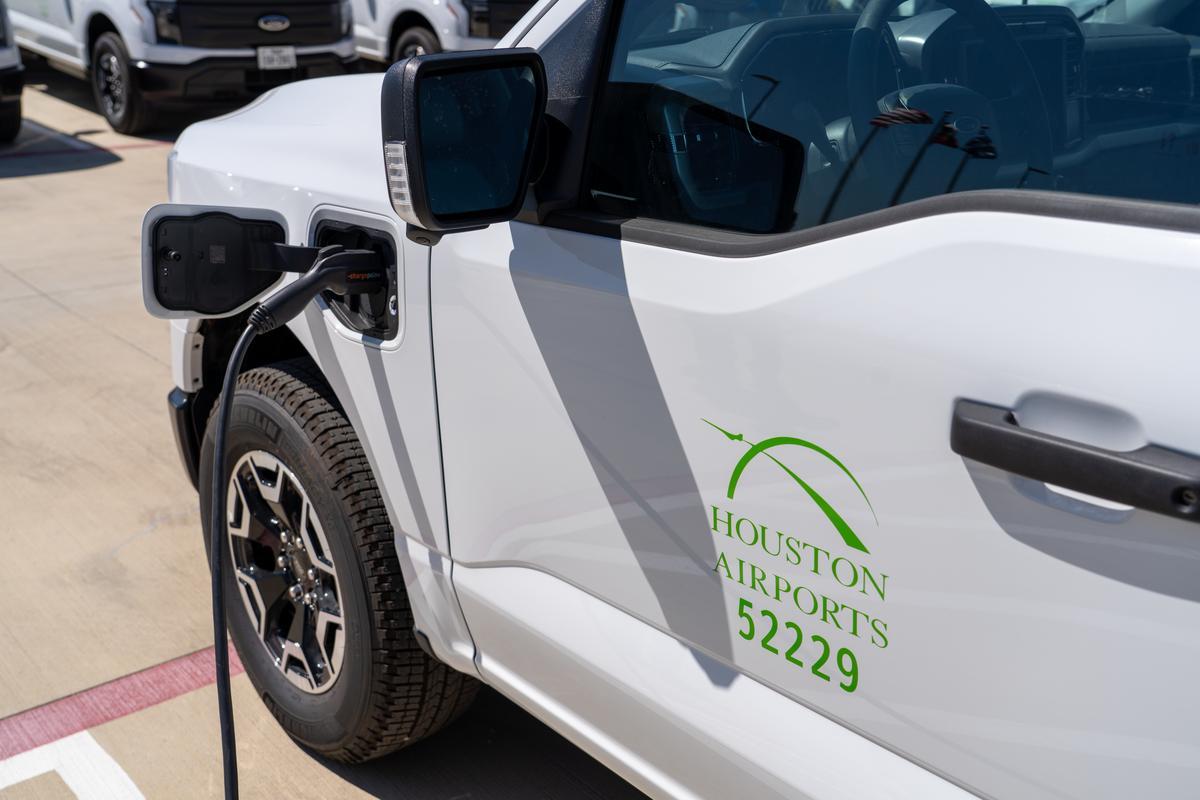How Houston Airports is wiring the future of travel
A $2.3 million investment by Houston Airports in electric vehicles is part of a race toward carbon neutrality by 2030.
Aug 20, 2025

When Mayor John Whitmire and the Houston City Council approved a $2.3 million investment in Ford Lightnings and E-Transit vans on August 20, the move wasn’t about what passengers would see at the curb. It was about what they wouldn’t: the fumes, fuel costs and vulnerabilities. By replacing 35 gas-powered vehicles with all-electric work trucks and vans, Houston Airports is cutting emissions, strengthening resiliency and accelerating toward its goal of carbon-neutral facilities by 2030.
In the coming months the keys for the 35 new electric vehicles will be handed over and Houston Airports will have 55 electric vehicles in its fleet—a sharp climb from zero in less than two years. Another 48 are already in the pipeline through a federal grant request. The transition is no longer a test—it’s the plan.
 Houston Airports has pledged carbon-neutral facilities by 2030. Each new EV helps accelerate that goal. And the economics are compelling. A 2021 EVolve Houston study found that electrifying just over 1,300 city vehicles could save nearly $7 million in fuel and maintenance, while cutting 5,700 metric tons of carbon annually—the equivalent of taking the electricity use of 1,176 homes off the grid.
Houston Airports has pledged carbon-neutral facilities by 2030. Each new EV helps accelerate that goal. And the economics are compelling. A 2021 EVolve Houston study found that electrifying just over 1,300 city vehicles could save nearly $7 million in fuel and maintenance, while cutting 5,700 metric tons of carbon annually—the equivalent of taking the electricity use of 1,176 homes off the grid.
“Fleet electrification isn’t just good for the environment, it’s a smart investment,” said Terrance N. York, division manager of fleet service contracts for Houston Airports. “These vehicles save money over time, and Houston benefits immediately from quieter, cleaner operations. That matters for an airport system serving more than 60 million travelers a year.”
Other sustainability upgrades are already visible. LED airfield lighting glows brighter and uses less energy. At IAH, a modernized central utility plant will power terminals with greater efficiency and reliability during Houston’s peak heat. At HOU, a solar panel array harnesses clean, renewable power to offset terminal energy use, reduce reliance on the grid and demonstrate how airports can generate electricity on-site.
 “We’re not electrifying for appearances—we’re doing it because it makes our system more resilient,” said Scott Hill, deputy director of infrastructure for Houston Airports. “Every EV added, every LED bulb replaced, every system modernized is another step toward a cleaner, more reliable airport. Passengers don’t have to think about power failures or air quality. They simply get a smoother journey.”
“We’re not electrifying for appearances—we’re doing it because it makes our system more resilient,” said Scott Hill, deputy director of infrastructure for Houston Airports. “Every EV added, every LED bulb replaced, every system modernized is another step toward a cleaner, more reliable airport. Passengers don’t have to think about power failures or air quality. They simply get a smoother journey.”
In just three years, Houston’s airports have moved from no accreditation to Level 3 in Airports Council International’s global carbon program—one of the fastest climbs of any airport system. A large hub, a medium hub and a spaceport achieved Level 3 together, underscoring that sustainability for Houston Airports is not a side project. It’s the strategy.
Hurricane Beryl struck in July 2024. Houston Airports discovered a new role for its EV fleet: emergency power grid. Initially purchased for sustainability, Ford Lightnings became mobile generators that powered traffic signals and fueled machinery for emergency repairs. That real-world test transformed the EV fleet from a green statement into an essential resilience tool. For Houston Airports, electric vehicles are reducing emissions and keeping the airport system ready for whatever comes next.